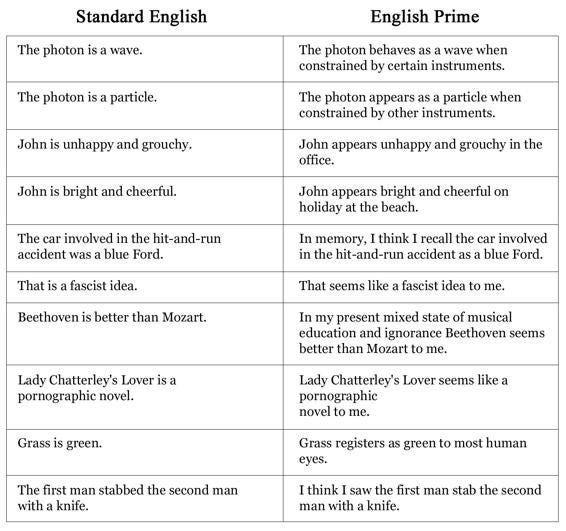Welcome to Mind Voyage fellow explorer🎉
My aim is to share with you a consistent dose of mind-enhancing content.
Subscribe here to level up:
Take a look at this image:
What do you see? Look carefully…
Describe what the image looks like to you?
If you did that exercise, did you see a young woman or an old lady?
Apparently, if you’re on the younger side you’re likely to see a young woman in the picture and if you’re much older you see the old lady.
Now look again. What do you see?
Can you see the old lady?
Let’s do this again.
Take a look at this drawing
What do you see?
Well, you might think this is a duck. Or this is a bunny.
But it’s more objective to say it looks like both a bunny and a duck depending on your perspective.
There is no observation without the observer. And what you see is tainted by what you expect to see.
This is the basis of E-Prime or English Prime. It’s a way of conveying this ambiguity that is a part of everyday life through better-crafted sentences that show the subjective nature of all observations.
Let’s look at another example.
In English, it’s correct to say “This looks like a man wearing a hat.”
In E-prime however, you’d say “From my perspective, it looks like a man wearing a hat.“
On the surface, both sentences sound like the same thing.
Now let’s flip that image upside down:
Now it looks more like a dog holding a bone.
The English statement “This looks like a man wearing a hat.” is now obviously wrong.
Whereas the E-Prime “From my perspective, it looks like a man wearing a hat.“ is more correct, because it highlighted that the observation was linked by the perspective. And now the perspective has changed so has the observation.
Here’s an example of a regular English statement we’ve all made in some form:
“My coworker John is depressed.“
And the E-Prime fix:
”My coworker John looks to me to be depressed when I see him in the office.”
And like the dog-man image above, a change in perspective can affect everything, i.e., “My coworker John looks to me to be happy when I see him at the beach on Saturdays.“
Here are more examples of E-Prime Vs regular English from the book Quantum Psychology which I recommend reading:
Regular English hides this (hopefully) obvious fact that everything you see is colored by your perception and you can never really know objective reality.
All we can know are models of the world created inside our heads. And they can vary widely from the models other people have in their heads.
When you understand E-Prime you start to view the world in a more objective way.
But Lenny, you might say, does this mean I have to talk in E-Prime all day. And I’d say, you’d probably sound awkward and boring if you did. But maybe you can learn to think in E-Prime.
When your friend is describing an event or someone else’s emotional state or you read an article somewhere…pay special attention to biases inherent in standard English and see how you can translate it into a more objective statement using E-Prime.
If you keep doing this exercise of viewing the world through E-Prime eventually you start to see the basic assumptions people make everywhere. You become more objective—less wrong and by definition a better thinker.
P.S. in E-Prime the headline for this post would be “From my current understanding reality appears to be a personal hallucination“— doesn’t exactly roll off the tongue does it? 😆











Phew I’m glad I don’t have to talk in e-prime all day, that anxiety started to creep up on me.
I like to stay true to tone, but there’s a time and place for everything
Black and blue or white and gold??